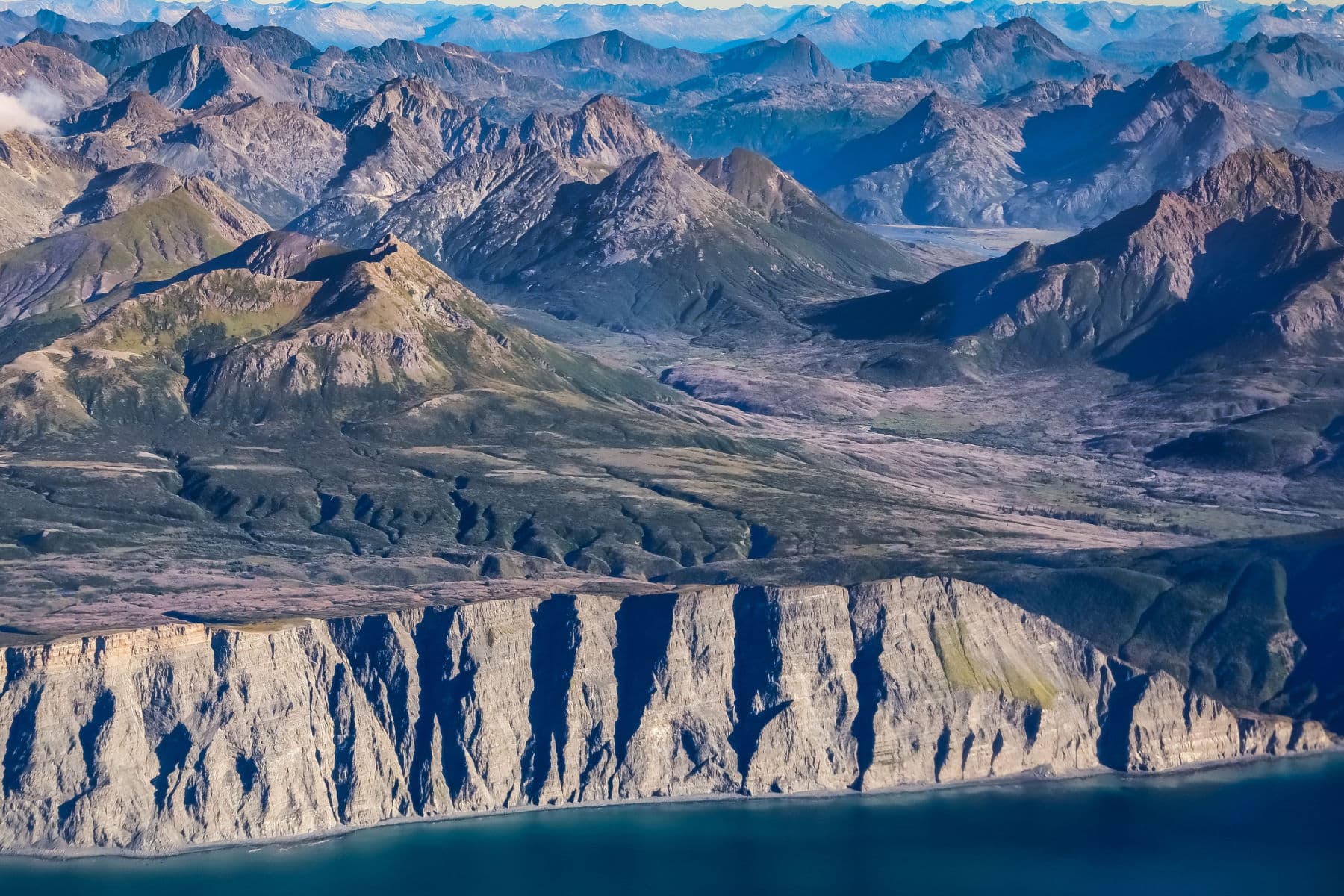
Article Summary: Katmai National Park Facts
Katmai National Park facts go further than those adorable fat bears we all watch every fall. We want to introduce you to more than just the Bears of Brooks Falls to find all the amazing things you never knew about this Alaskan wonder.
I’ve been to so many of these amazing places since retiring from teaching in 2018. Did I mention that I taught history? I spent a lifetime teaching about the history behind some of these natural wonders. Then I got to see them firsthand. And now I’m sharing some of the incredible stories about these beautiful places with you. It doesn’t get any better than that!
More Than Just Parks takes a deeper dive with its national park facts. We’ve done our homework so that you’ll get more than you bargained for.
Without further ado, let’s dive in.
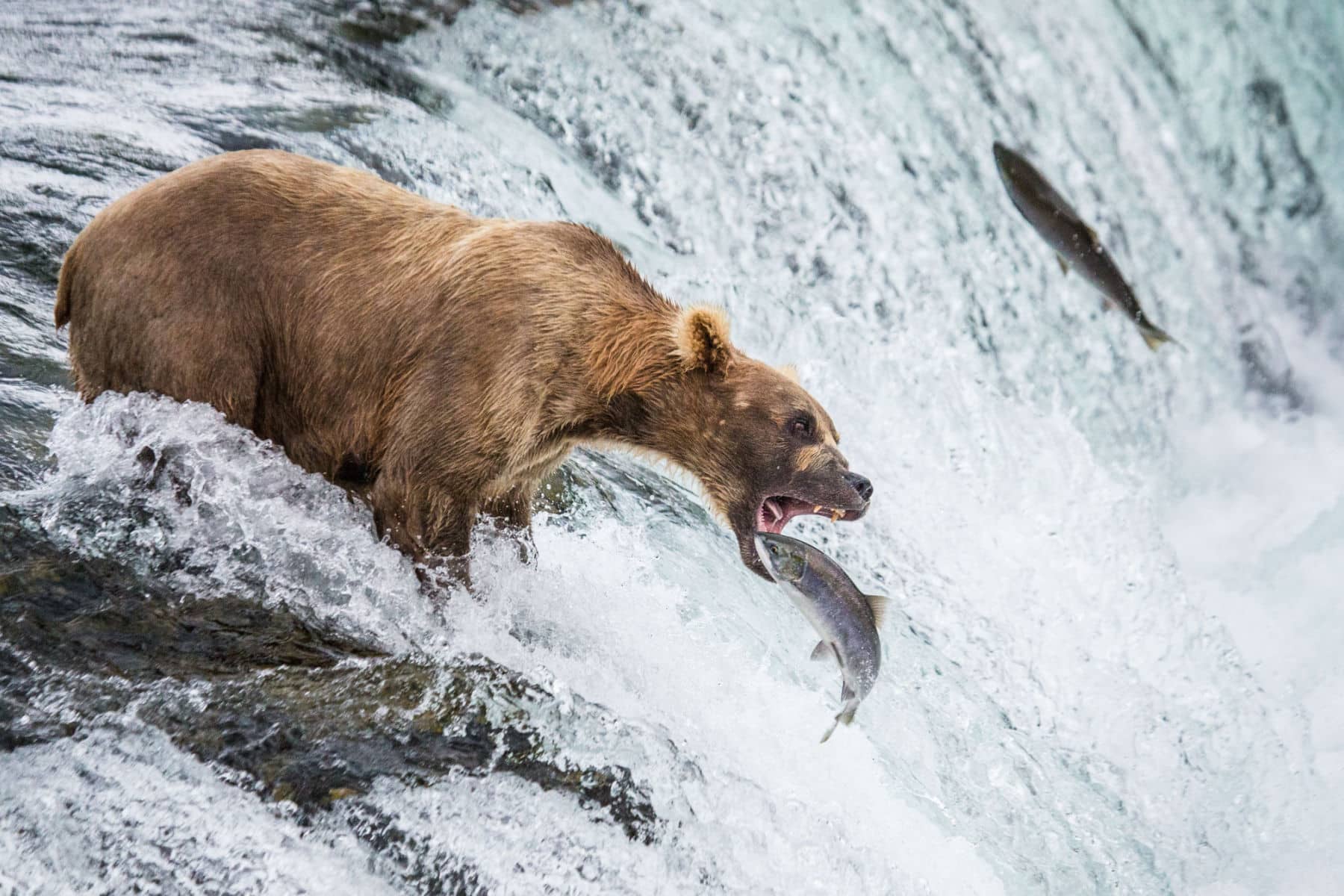
Table Of Contents: Katmai National Park Facts
Katmai National Park Facts
- Some Basic Facts About Katmai National Park
- Katmai National Park Facts
- Top 5 Katmai National Park Facts
- 1. The Earliest Inhabitants Established Camps On The Katmai Pacific Coast Almost 6,000 Years Ago
- 2. The First Europeans To Arrive In The Katmai Area Were Russians
- 3. On June 6, 1912, The Largest Volcanic Eruption Of Its Kind Occurred, Creating Katmai Caldera and the Valley Of 10,000 Smokes
- 4. Katmai National Park Became A Center Of Scientific Exploration
- 5. Scientists Have Documented 42 Species Of Mammals
- Top 11 Katmai National Park Facts
- 6. Katmai Is One Of The Premier Brown Bear Viewing Areas In The World
- 7. Katmai Sits Near The Boundary Of Two Tectonic Plates
- 8. Katmai Is Home To Hundreds Of Different Plant Species
- 9. A Variety Of Salmon and Other Fish Inhabit Katmai
- 10. The Park Has Some Amazing Hiking Trails
- 11. Jimmy Carter expanded the Park As Part Of The Largest Single Act Of Conservation In U.S. History
- Pin Katmai National Park Facts
- Meet The Parks Brothers
- Map Of Katmai National Park
- We Hope You’ll Follow Our Journey
- Top 5 Katmai National Park Facts
Some Basic Facts About Katmai National Park
Katmai National Park is a beautiful and wild park located in Alaska. The park covers over 3.7 million acres of land and is home to a wide variety of plant and animal life, as well as several unique geological features.
The park is named after Mount Katmai, a massive volcano that stands at an elevation of 7,000 feet and is located within the park’s boundaries. It’s also home to several other volcanoes, including Mount Martin and Mount Griggs.
Katmai’s landscape is diverse, with forests of spruce and pine trees, alpine meadows, and crystal-clear streams and lakes. The park is also home to a wide variety of plant and animal life, including grizzly bears, wolves, and over 200 species of birds.
There are many ways to explore and enjoy Katmai National Park. Visitors can go hiking or backpacking on the park’s trails, go fishing or boating in the park’s streams and lakes, or even go bear-watching in the park’s beautiful landscapes.
There are also several campgrounds and lodges located within the park.

CHECK OUT: 8 AMAZING Alaska National Parks – Helpful Guide For Visiting
Katmai Fast Facts
- Location: Alaska
- Acreage: Katmai National Park and Preserve spans over four million acres of remote, wild, and spectacular country.
- Visitation: Since the park was established in 1980, it has averaged total annual visits of more than 37,000.
- Elevation: Mount Katmai, the namesake of the park, reaches a height of 6,716 feet. It is a stratovolcano with a crater lake at the top.
- Climate and Average Weather Year Round: In Katmai National Park, the summers are cool and mostly cloudy, and the winters are long, freezing, snowy, windy, and partly cloudy. Over the course of the year, the temperature typically varies from 11°F to 64°F and is rarely below -19°F or above 73°F.
- When Did It Become A National Park? As word of Katmai’s brown bears spread during the 1980s, the Brooks River area, and later the Katmai coast, became popular wildlife viewing spots. In 1980, the Katmai National Monument was expanded to its present size and became Katmai National Park and Preserve.
- How to get to Katmai National Park: No roads mean you’ll have to take a floatplane or boat to get here, but aren’t the bears worth it?
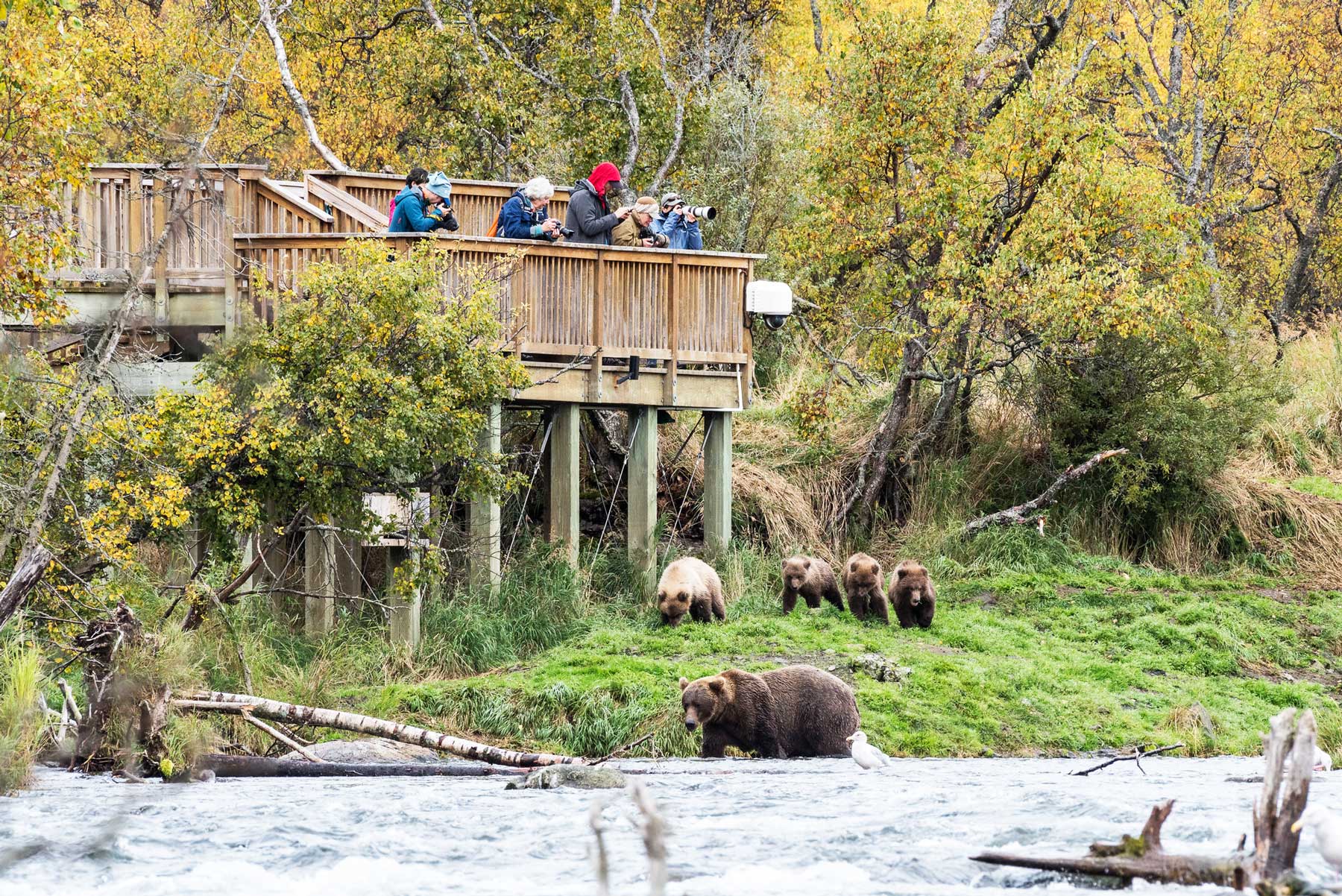
CHECK OUT: 11 AMAZING Facts About Acadia National Park
Katmai National Park Facts
Top 5 Katmai National Park Facts
1. The Earliest Inhabitants Established Camps On The Katmai Pacific Coast Almost 6,000 Years Ago
As a retired history teacher and lifelong history buff, I love origin stories. For me, one of the most interesting Katmai National Park Facts concerns its earliest inhabitants.
Archaeologists have examined tools and pottery from Alaskan Natives, which indicate that the earliest peoples to inhabit the area arrived approximately 3,000 years ago.
The Native Alaskans that lived in the area were two distinct but closely related groups: the Inuits and the Yupiks.
A third group is the Aleuts. They inhabit the Aleutian islands that stretch out after the Alaska Peninsula ends.
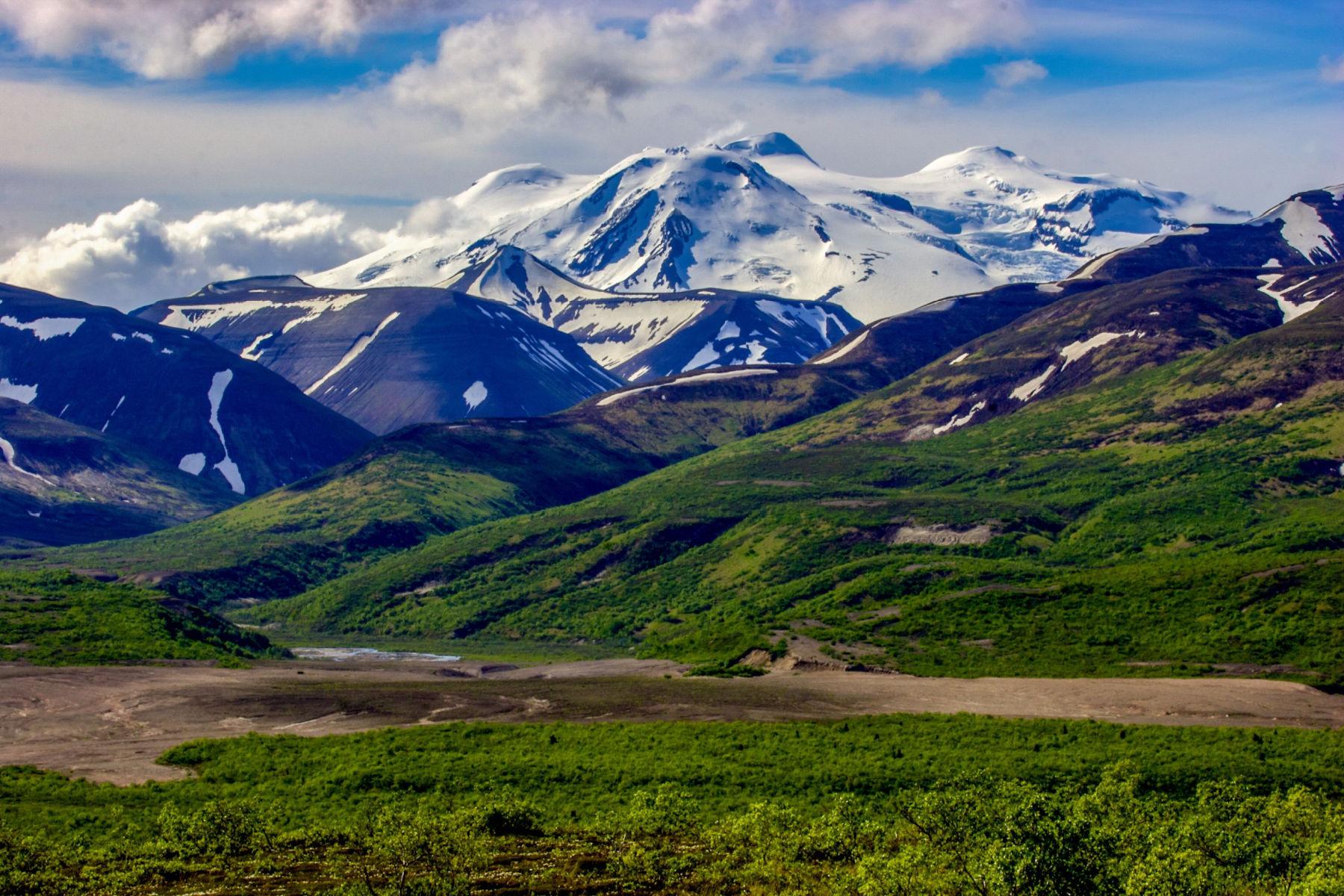
The History Of The Region
The history of the region, which is today Katmai National Park, is divided into five distinct periods. They include:
- The Paleoarctic Tradition – 9,000 to 7,000 years ago
- The Northern Archaic Tradition – 5,000 to 3,850 years ago
- The Arctic Small Tool Tradition – 3,850 to 3,000 years ago
- The Norton Tradition – 2,250 to 900 years ago
- The Thule Tradition – 900 years ago to historic contact
To learn more about each of these important periods, check out this helpful website.

CHECK OUT: 14 AMAZING Facts About Biscayne National Park
2. The First Europeans To Arrive In The Katmai Area Were Russians
Another of the fascinating Katmai National Park Facts concerns the first Europeans to visit Katmai.
In 1784, Shelikhov established a settlement called Three Saints Bay on Kodiak Island, which became the hub of the Russian fur trade and colonization in Alaska.
The Russians brought with them new technologies, weapons, and diseases that greatly impacted the indigenous populations.
The Sugpiat/Alutiiq people, who had lived on Kodiak Island and across Shelikof Strait for thousands of years, were forced into a dependent relationship with the Russians, who controlled the fur trade and exerted political and economic power over the native people.
The Russian presence on Kodiak Island and the surrounding areas led to significant changes in the traditional ways of life for the Sugpiat/Alutiiq people, and the population was greatly reduced due to disease and forced labor.
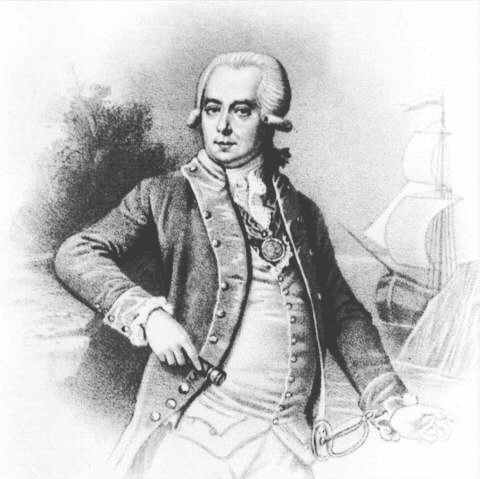
The Russians Mistreated The Native Peoples
This is a fascinating yet tragic fact because the Russian traders violently coerced Unangan (Aleut) men to trap beaver and other fur-bearing animals.
They took Unangan women and children hostage, demanding furs in exchange for their lives. While the men were out hunting, the Russians sexually exploited the hostages.
By 1795, the thriving activities of Russian traders led to the forced conscription of up to 1,400 Aleuts at a time.
The Aleuts were forced to travel as far away as Sitka (900 miles). Aleuts who refused could be killed. Most of these native hunters never returned to their villages.
To learn more about this important yet little-understood period in Alaska’s history, I recommend: Russians in Alaska: 1732-1867 by Lydia Black.
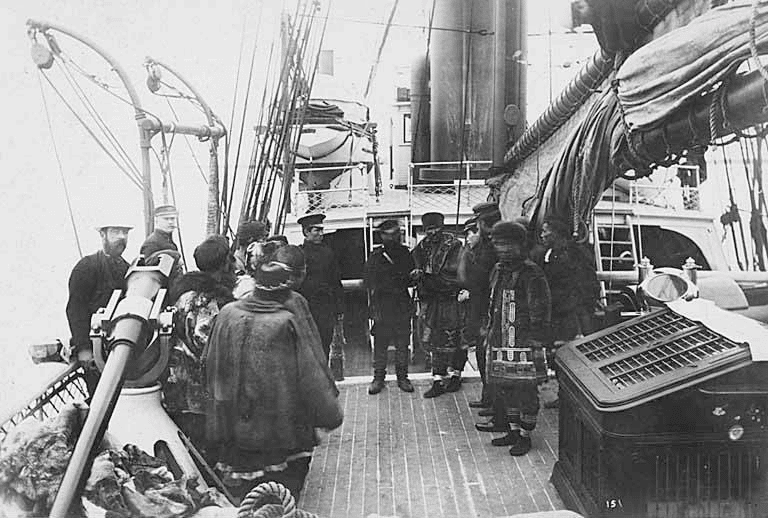
CHECK OUT: 14 AMAZING Facts About Canyonlands National Park
3. On June 6, 1912, The Largest Volcanic Eruption Of Its Kind Occurred, Creating Katmai Caldera and the Valley Of 10,000 Smokes
One of the most fascinating Katmai National Park Facts has to do with the creation of two of the park’s most iconic landmarks – Katmai Caldera & the Valley of 10,000 Smokes.
The largest volcanic eruption of the twentieth century exploded June 6, 1912.
It occurred from a new volcano, Novarupta.
In the process, it created the Katmai caldera and the Valley of Ten Thousand Smokes.

Darkness So Complete That A Lantern Held At Arm’s Length Could Scarcely Be Seen
According to the National Park Service, at Kodiak, 100 miles southeast of the eruption center, the air became thick with ash. As a matter of fact, for 60 hours, the darkness was so complete that a lantern held at arm’s length could scarcely be seen.
The terrified townspeople, some temporarily blinded by the sulfurous gas, crowded onto the U.S. Revenue Cutter Manning docked in Kodiak harbor, while one foot of ash smothered their town with three closely spaced periods of ash fall.
The weight of the ash collapsed roofs in Kodiak; buildings were wrecked by ash avalanches that rushed down from nearby hill slopes; other structures burned after being struck by lightning from the ash cloud; and water became undrinkable.
Miraculously, no one was killed in the eruption or its aftermath.

It Was Heard Throughout Alaska
The sound of the explosion was heard throughout Alaska on the morning of June 6th. It was heard in Juneau, 750 miles away; in Fairbanks, 500 miles northeast; and in Dawson, 650 miles northeast.
Acid rain that was produced by the sulfurous clouds burned people’s skin and eyes in Cordova, eating into metal roofs and killing all of the vegetation on Seward on June 11th.
At Cape Spencer, 700 miles to the east, fumes tarnished brass within 20 minutes after it was polished.
Two feet of ash covered an area of 2,500 square miles, and dust fell in Puget Sound, Washington, 1,500 miles away, obscuring the sun and dissolving linen in Vancouver with its acidity.
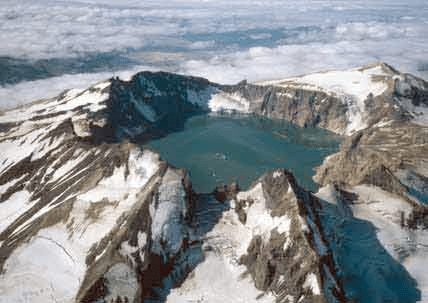
The Summit Of Mt. Katmai Collapsed
By midnight of the first day, 11 hours into the eruption, enough magma had escaped from beneath Mount Katmai that about 1.2 cubic miles of its summit collapsed.
The collapse resulted in a 1.5-mile-wide caldera, which has since accumulated a lake about 800 feet deep.
Caldera collapse was accompanied by 14 earthquakes of magnitudes 6 to 7, 100 shocks greater than magnitude 5, and countless smaller shocks.
By June 9, when the main outpouring finally ceased at Novarupta and the day dawned clear at Kodiak, the advancing ash cloud had begun dropping sulfur-permeated fallout on Puget Sound in Washington State. On the following day, the cloud passed over Virginia, and by June 17, it reached Algeria.
The Valley of Ten Thousand Smokes was created by a flow of superheated gas, ash, and dust created by the eruption. The material filled the once v-shaped Knife Creek Valley and created a barren and flat plain.
In the end, the solidified volcanic material covered a surface area of over 120 square kilometers to depths of over 200 meters thick near its source.

Atmospheric Effects
Atmospheric effects (haze, smoke, red twilights) had been observed downwind, beginning in British Columbia on June 6 and in European locations two weeks later.
The great quantity of ash and aerosol not only caused unusually brilliant sunsets but, by shielding the sun’s rays, lowered average temperatures by about 2°F (1°C) in the Northern Hemisphere for more than a year.
Wind re-mobilization of the finest ash from the Valley of Ten Thousand Smokes during dry spells continues, a century later, to loft occasional dust clouds to elevations of thousands of meters. (Source: NPS)
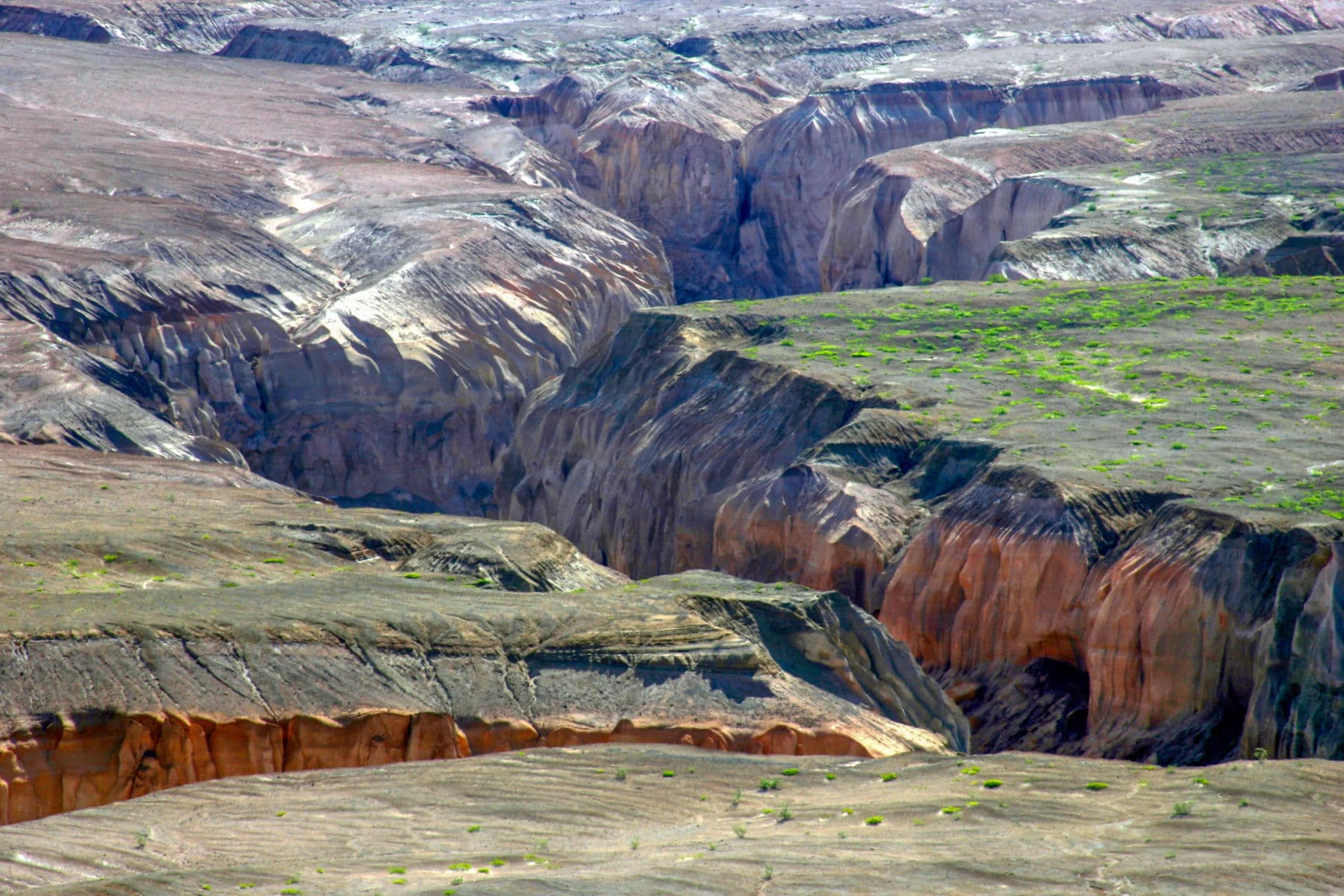
CHECK OUT: 10 FASCINATING Facts About Denali National Park
4. Katmai National Park Became A Center Of Scientific Exploration
The catastrophic eruption, which produced the largest volcanic eruption of the 20th century, also sparked scientific curiosity about Katmai, which is another fascinating Katmai National Park Fact.
According to the National Park Service, a month after the eruption, the National Geographic Society investigation began.
Between 1912 and 1919, the Society made seven ventures to the eruption zone, which became known as the Valley of Ten Thousand Smokes.
The expedition was led by a remarkable man by the name of Robert Fiske Griggs.
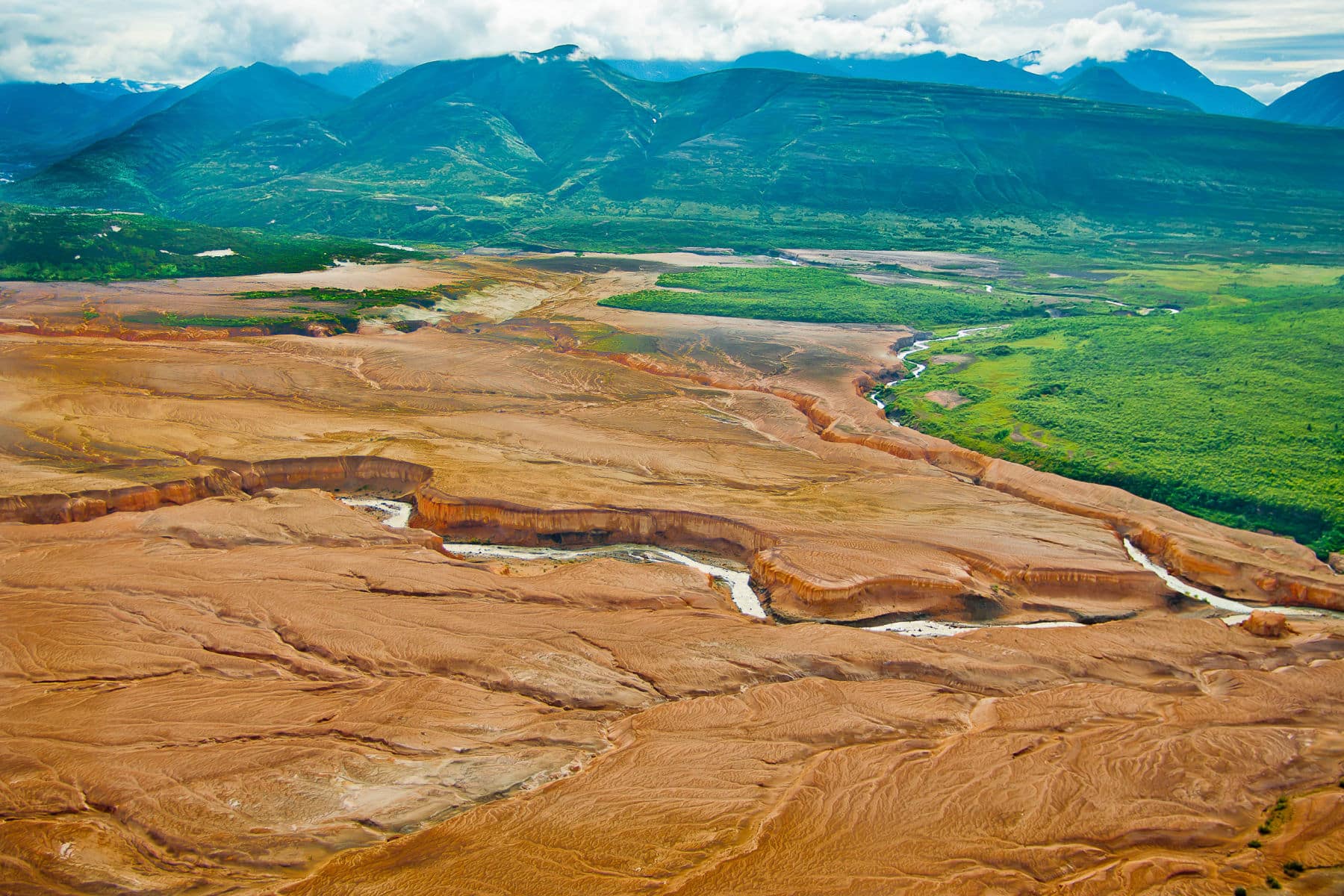
Robert Fiske Griggs
For me, one of the most thrilling parts of doing the research into these articles is learning the stories of the amazing men and women who played such indispensable roles in the creation of America’s national parks.
One such person is Robert Fiske Griggs.
Griggs’ study of the eruption’s effects on the island’s vegetation led him to become interested in the region’s geology, and in 1915 he led an expedition to the Valley of Ten Thousand Smokes.
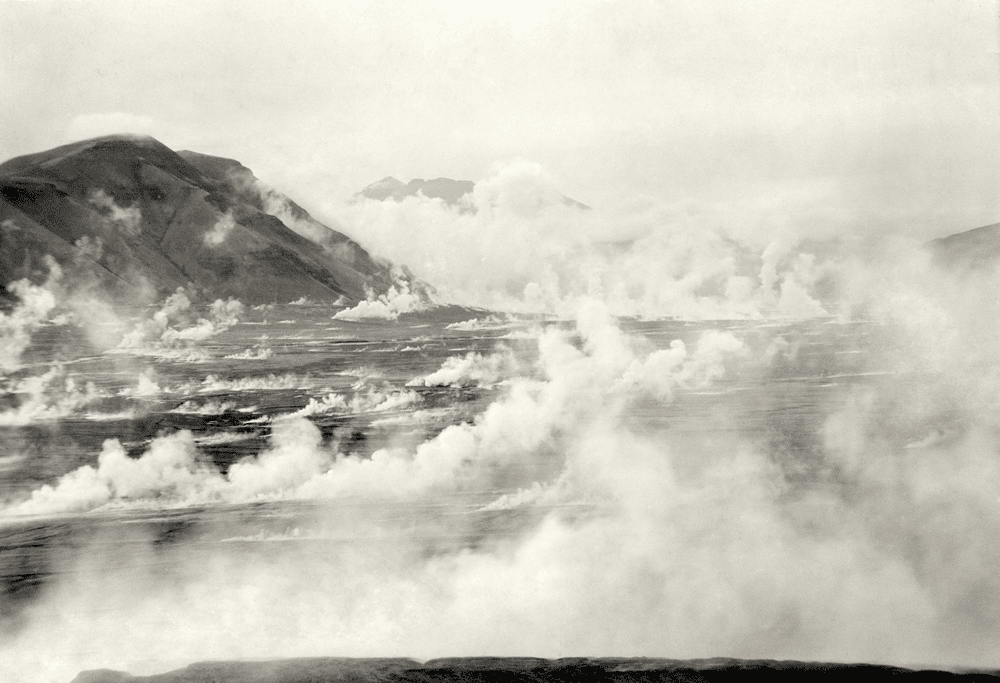
The valley, named for its thousands of fumaroles, or volcanic vents, had been created by the eruption of Novarupta, which was the largest volcanic eruption of the 20th century.
The expedition was the first to explore the valley and document the geologic and biological changes caused by the eruption.
Griggs’ work in the Valley of Ten Thousand Smokes eventually led to the establishment of Katmai National Park and Preserve in 1918.
He continued to study the region and published several papers on the geology and biology of the area, cementing his reputation as a leading expert on the Alaskan volcanoes and their effects on the environment.
Griggs would later become the first director of the National Park Service’s Division of Scientific Research.
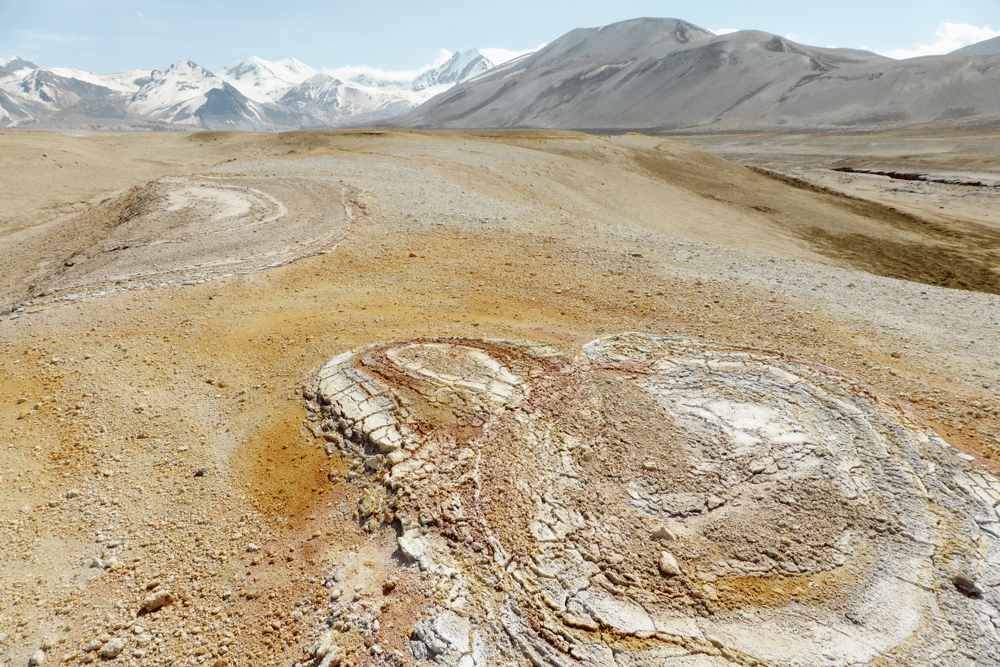
Take A Deeper Dive
If you’re interested in learning more about Robert Griggs and his epic expedition, I recommend: The Valley of Ten Thousand Smokes by Robert F. Griggs.
CHECK OUT: 12 AMAZING Facts About Dry Tortugas National Park
5. Scientists Have Documented 42 Species Of Mammals
If you’re someone who loves to watch wildlife, then you’ll enjoy this Katmai National Park Fact.
Scientists in Katmai have documented 42 species of mammals from the coast to the tundra.
Brown bears and moose live throughout the coastal and lake regions of Katmai National Park and Preserve.
Other mammals include caribou, red fox, wolf, lynx, wolverine, river otter, mink, marten, weasel, porcupine, snowshoe hare, red squirrel, and beaver.
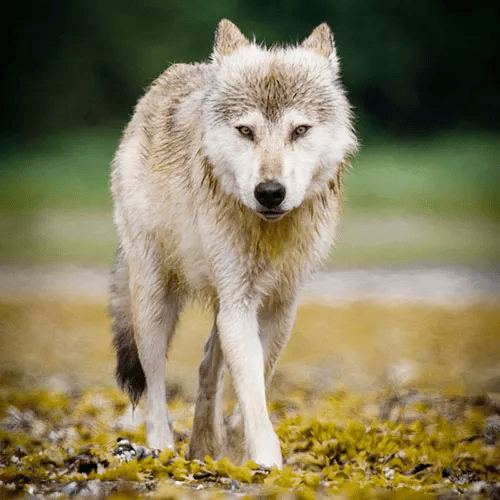
Along the coast are sea lions, sea otters, harbor seals, and porpoises.
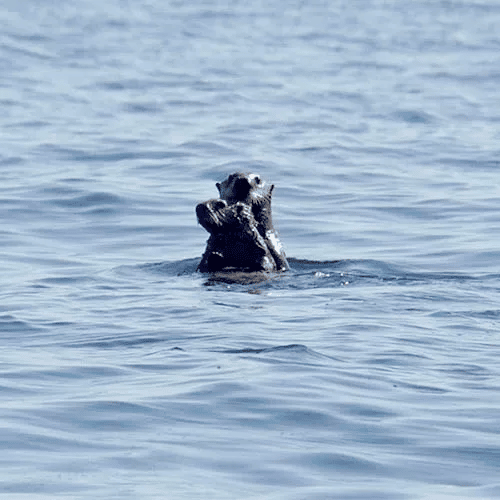
Beluga whales, orcas, and gray whales sometimes use the Shelikof Strait just beyond Katmai’s boundaries.
CHECK OUT: 16+ FASCINATING Grand Canyon Facts
Top 11 Katmai National Park Facts
6. Katmai Is One Of The Premier Brown Bear Viewing Areas In The World
Another of the amazing Katmai National Park Facts deals with bears that are among the largest in the world.
As a matter of fact, Katmai is one of the premier brown bear viewing areas in the world.
About 2,200 brown bears are estimated to inhabit the park. More bears than people are estimated to live on the Alaska Peninsula.
According to the National Park Service, as many bear populations around the world decline, Katmai provides some of the few remaining unaltered habitats for these amazing creatures.
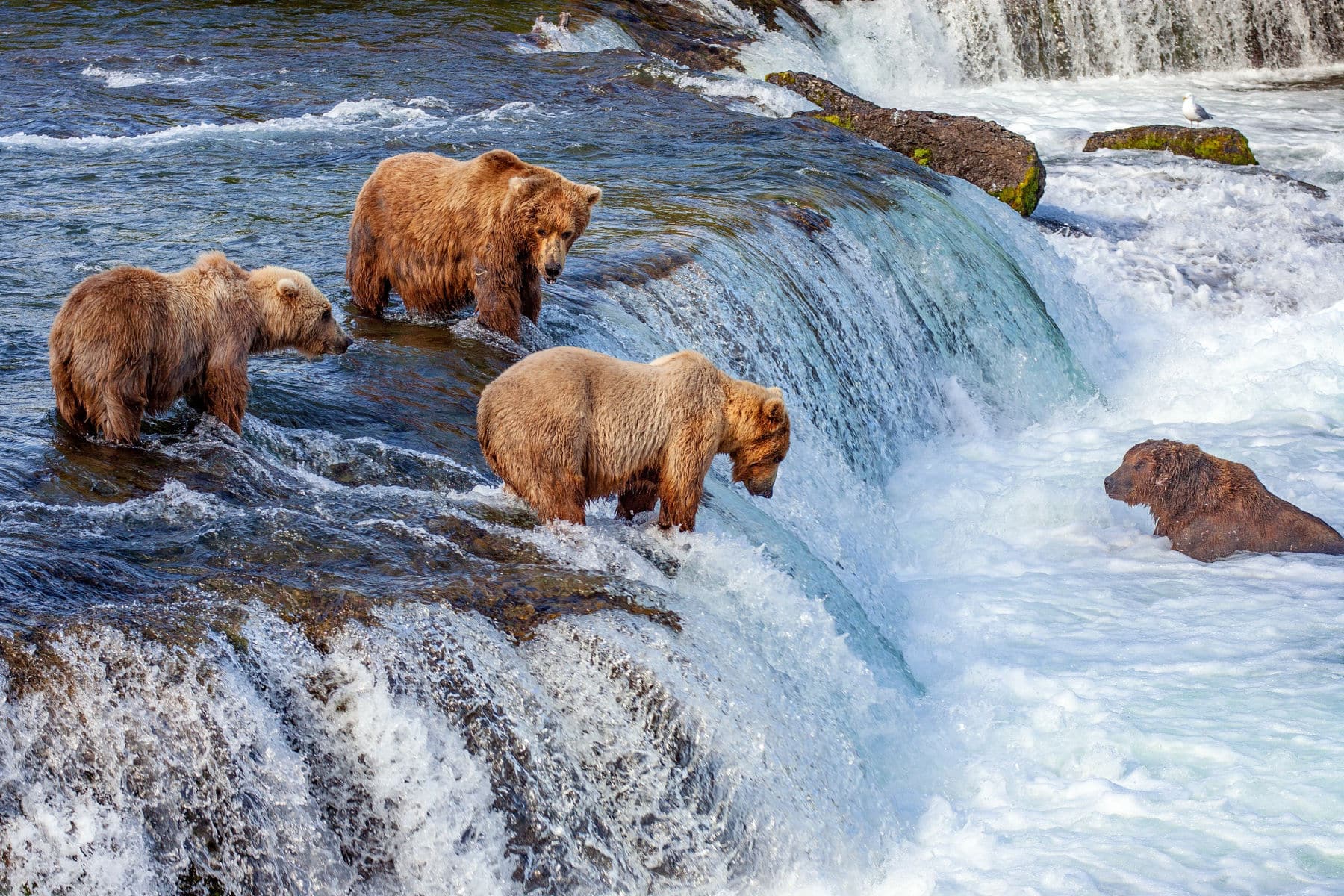
See Bears In Their Natural Habitat
At Katmai, scientists are able to study bears in their natural habitat, visitors are able to enjoy unparalleled viewing opportunities, and the bears are able to continue their life cycle largely undisturbed.
Another interesting fact that I learned is that a bear’s waking hours are often dominated by their search for food.
Outside of their denning season, bears predictably congregate in food-rich areas throughout Katmai. Some areas of Katmai National Park, like the food-rich Pacific coast, support some of the highest densities of bears ever documented.
Other areas of the park with little food, such as the Valley of Ten Thousand Smokes, support only a few bears in any season.
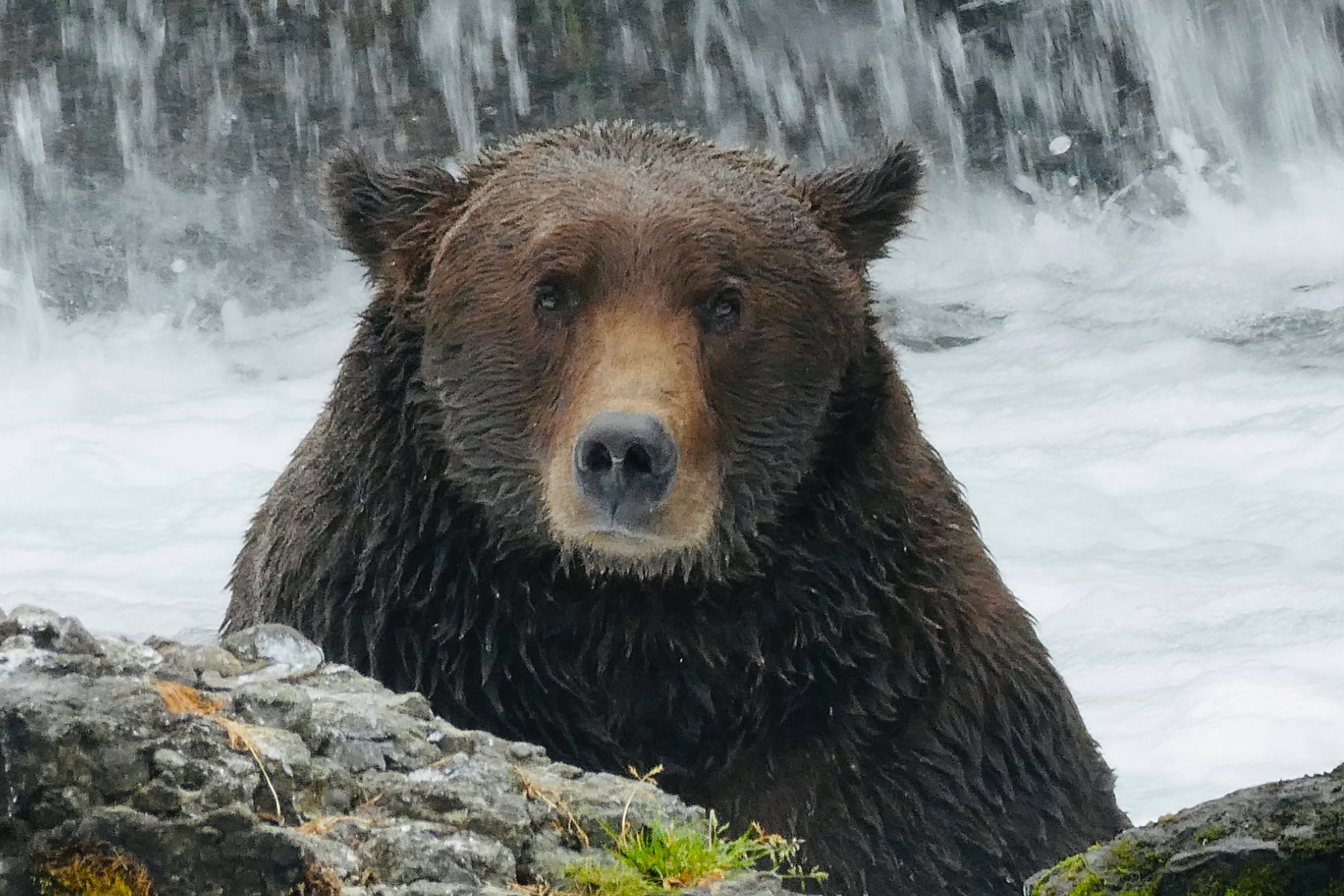
Bear Watching at Brooks Camp
At Brooks Camp, brown bears congregate to feed on sockeye salmon in the Brooks River.
Four wildlife viewing platforms along the river offer safe and spectacular wildlife viewing opportunities while minimizing our potential impact on the bears.
For more information about bear watching at Brooks Camp, see Katmai’s park guide, The Novarupta, or download the brochure, Bear Viewing at Brooks Camp.
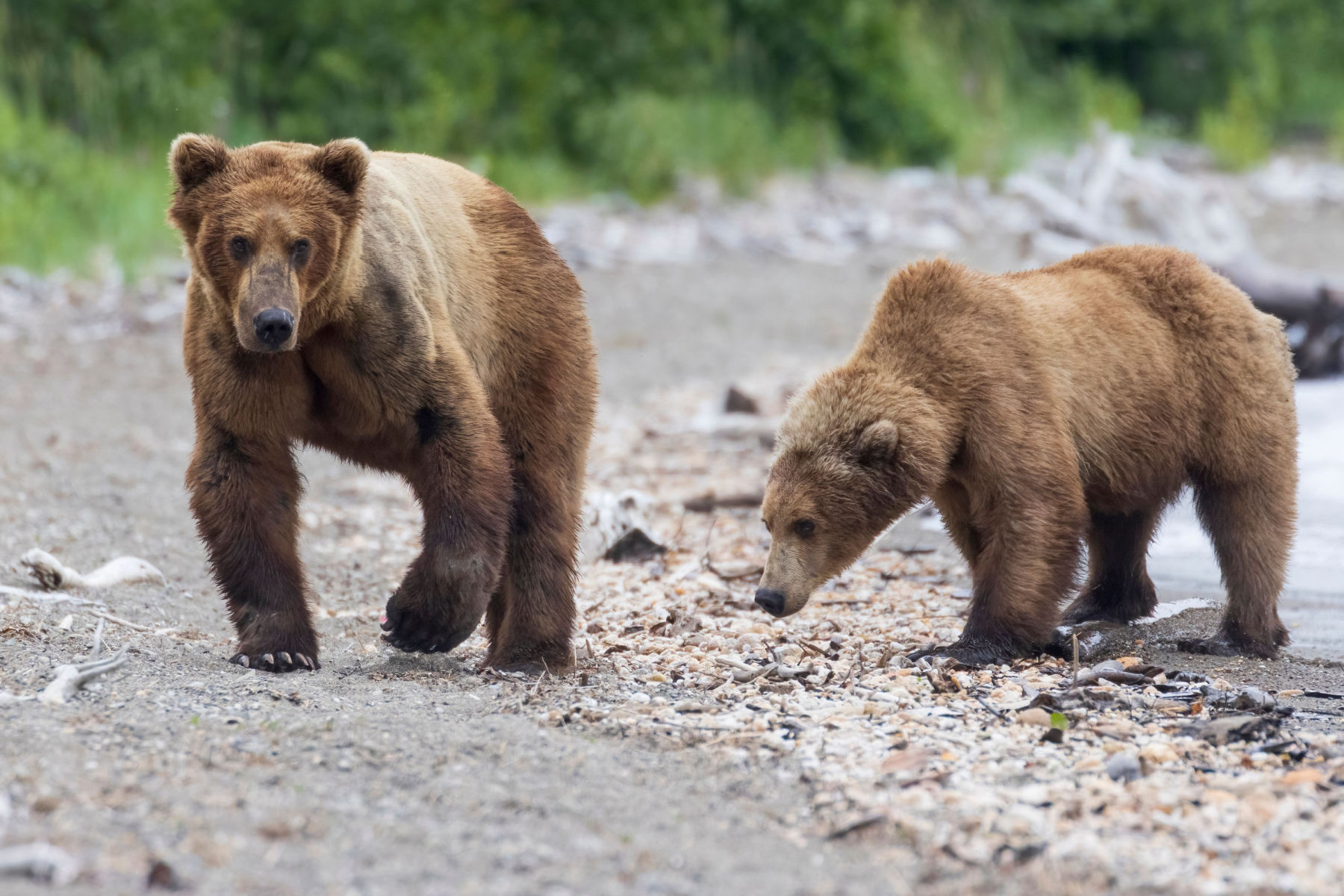
Other Bear-Watching Destinations in Katmai
| Area | Best Time for Bear Viewing |
|---|---|
| Brooks River | July-September |
| Hallo Bay | June-September |
| Kulik River | June-September |
| Moraine Creek | June-September |
| Savonoski River | June-September |
It’s important to note that these are just general guidelines and that bear viewing opportunities can vary greatly depending on the year and the specific location.
Additionally, it’s always important to follow proper bear safety guidelines and to check with park rangers for current bear activity and trail conditions.
For guides and/or transportation to bear viewing areas, see the list of commercial operators authorized to provide bear viewing trips in Katmai National Park and Preserve.
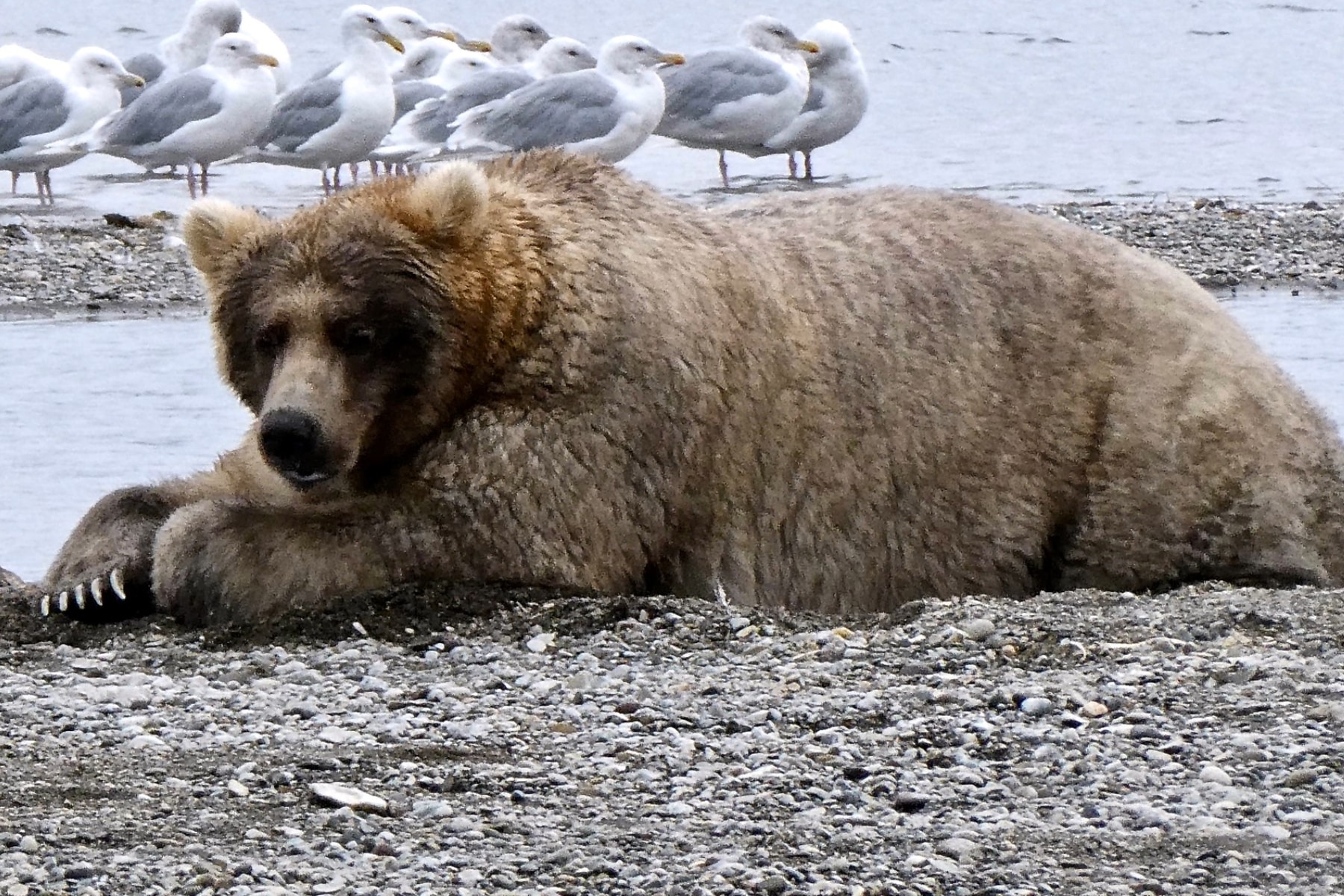
CHECK OUT: 15 AMAZING Facts About Grand Teton National Park
7. Katmai Sits Near The Boundary Of Two Tectonic Plates
Among the lesser known of the Katmai National Park Facts is that the park sits near the boundary of two tectonic plates. They are the Pacific Plate and the North American Plate.
For those of you who are unfamiliar with geology, these plates are slabs of the earth’s crust that glide over its surface. The new crust is spreading centers on the ocean floor. The crust is recirculated into the earth’s interior at subduction zones.
Subduction zones are where Earth’s tectonic plates dive back into the mantle at rates of a few to several centimeters per year. These are key features of Earth’s plate tectonic regime.
A subduction zone actually lies beneath Katmai.
The 1964 Alaska earthquake, the strongest earthquake ever recorded in North America, struck Alaska’s Prince William Sound, about 74 miles southeast of Anchorage.
Most of Alaska’s mainland felt the magnitude 9.2 earthquake, which wobbled Seattle’s Space Needle some 1,200 miles away.
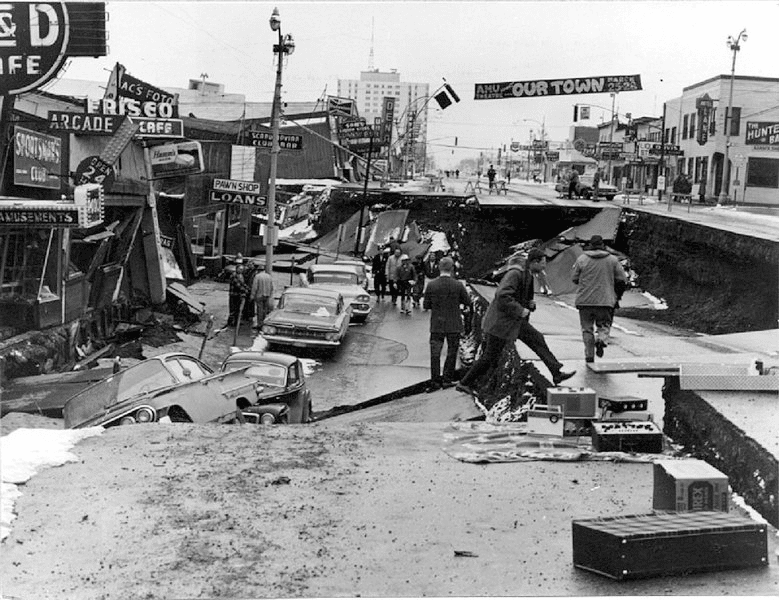
CHECK OUT: 10 FASCINATING Facts About Great Basin National Park
8. Katmai Is Home To Hundreds Of Different Plant Species
Just when you thought we couldn’t come up with another amazing Katmai National Park Fact, we did.
Katmai National Park and Preserve is known for its diverse plant life, ranging from boreal forest to alpine tundra.
The park is home to over 350 species of vascular plants, including a variety of wildflowers, shrubs, and trees. The park also has a unique variety of mosses, lichens, and fungi.
The park’s plant life varies depending on the elevation and the location, the most common is the black spruce, white spruce, and balsam poplar forests which are found in the lower elevations of the park.
The higher elevations are home to dwarf shrubs such as willows, blueberries, and heather.
The park’s wetlands, including the Brooks River, are also home to a variety of plants, such as marsh marigold, cottongrass, and bog rosemary, which provide food and habitat for a variety of wildlife, including bears and waterfowl.
Protecting and preserving the park’s plant life is vital to maintaining the biodiversity and ecological integrity of the park. Park managers use a variety of techniques to protect and preserve the park’s plant life, including monitoring and research, controlling invasive species, and working with local communities and partners.
See a complete list of Katmai’s plant species.

CHECK OUT: 25 Bucket List Famous Landmarks In America (MUST-SEE)
9. A Variety Of Salmon and Other Fish Inhabit Katmai
Our next Katmai National Park Fact is for folks who love seafood. If you love to fish, then you’ll be thrilled to know that Katmai National Park features a variety of salmon and other fish.
Most facilities for tourists were first developed because of the area’s remarkable sport fishing opportunities.
The chance to catch Katmai’s abundant rainbow trout, arctic char, dolly varden, arctic grayling, lake trout (char), as well as five species of Pacific Salmon, attract anglers from all over the world.

CHECK OUT: ALL 63 US NATIONAL PARKS RANKED BY EXPERTS
10. The Park Has Some Amazing Hiking Trails
As someone whose family is always encouraging him to “get in his steps,” one of my favorite Katmai National Park Facts has to do with the park’s amazing hiking trails.
The trails still cover a wide range of experiences, including bear viewing, cultural history, quiet forests, alpine tundra, and rugged mountain scenery.
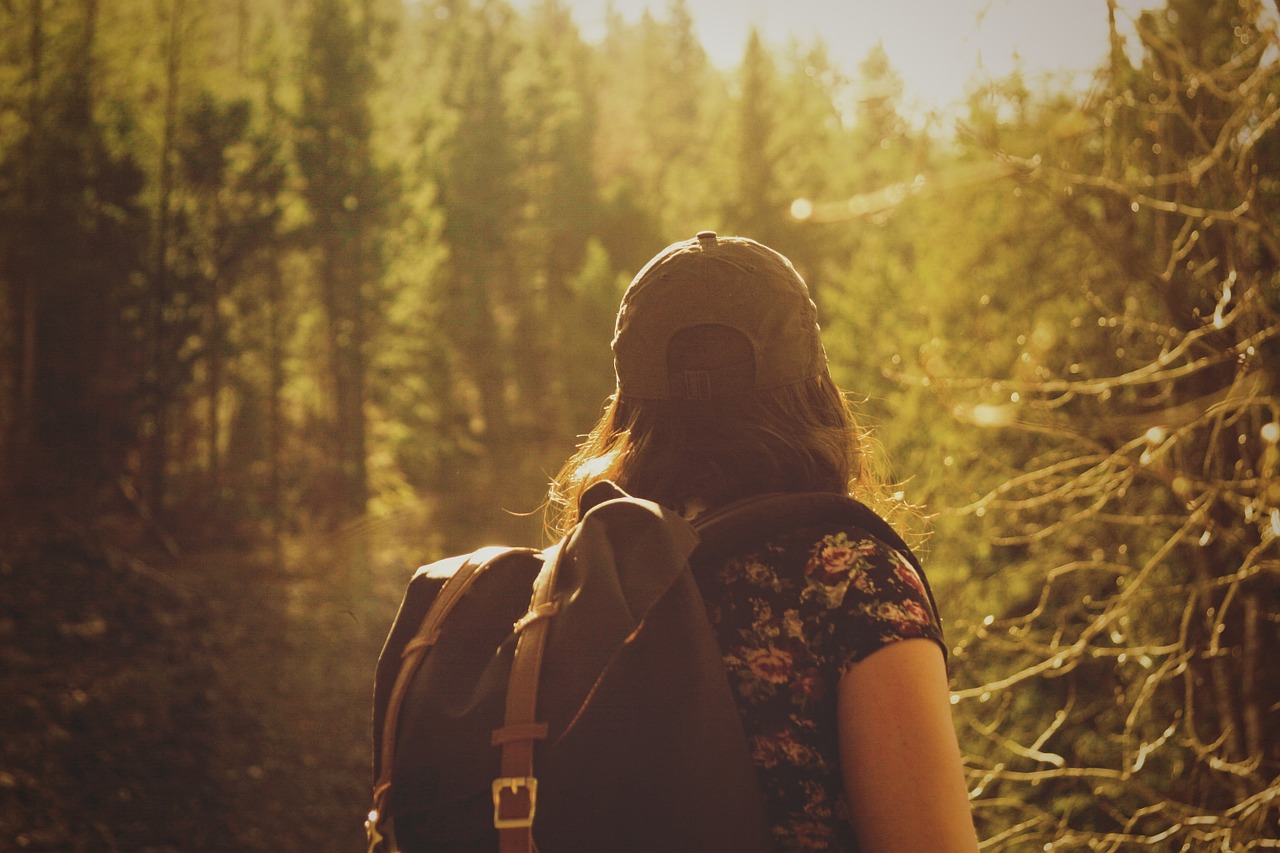
These Are A Few Of My Favorite Trails
Among my favorite trails are:
- Brooks Falls Trail: This is the most popular trail in Katmai. It contrasts a quiet walk through the boreal forest with the intimidating and exciting presence of brown bears. The Brooks Falls Trail begins across from the vault toilets .3 miles from the South Platform. This is the most popular trail in Katmai. It contrasts a quiet walk through the boreal forest with the intimidating and exciting presence of brown bears. The Brooks Falls Trail begins across from the vault toilets .3 miles from the South Platform.
- Cultural Site Trail: This easy, self-guided trail starts from the Brooks Camp Visitor Center and winds through several prehistoric camps to a reconstructed native dwelling, a traditional semi-subterranean home sometimes referred to by its Russian name, Barabara. Brooks Camp is part of the Brooks River National Historic Landmark, which has one of the highest concentrations of prehistoric human dwellings in North America. Over 900 depressions, indicating the remains of semi-subterranean homes and campsites, line both sides of Brooks River.
- Valley of Ten Thousand Smokes Road: For those who like to walk, this is the primary access for exploring the Valley of Ten Thousand Smokes. This road begins .7 miles from the South Platform along Lake Brooks Road. Three stream crossings are necessary to hike its entire length. The majority of the road cuts its way through dense boreal forest. Particularly scenic views can be found at mile 7.5 and frequently beyond the first stream crossing at mile 12. (Source: NPS)
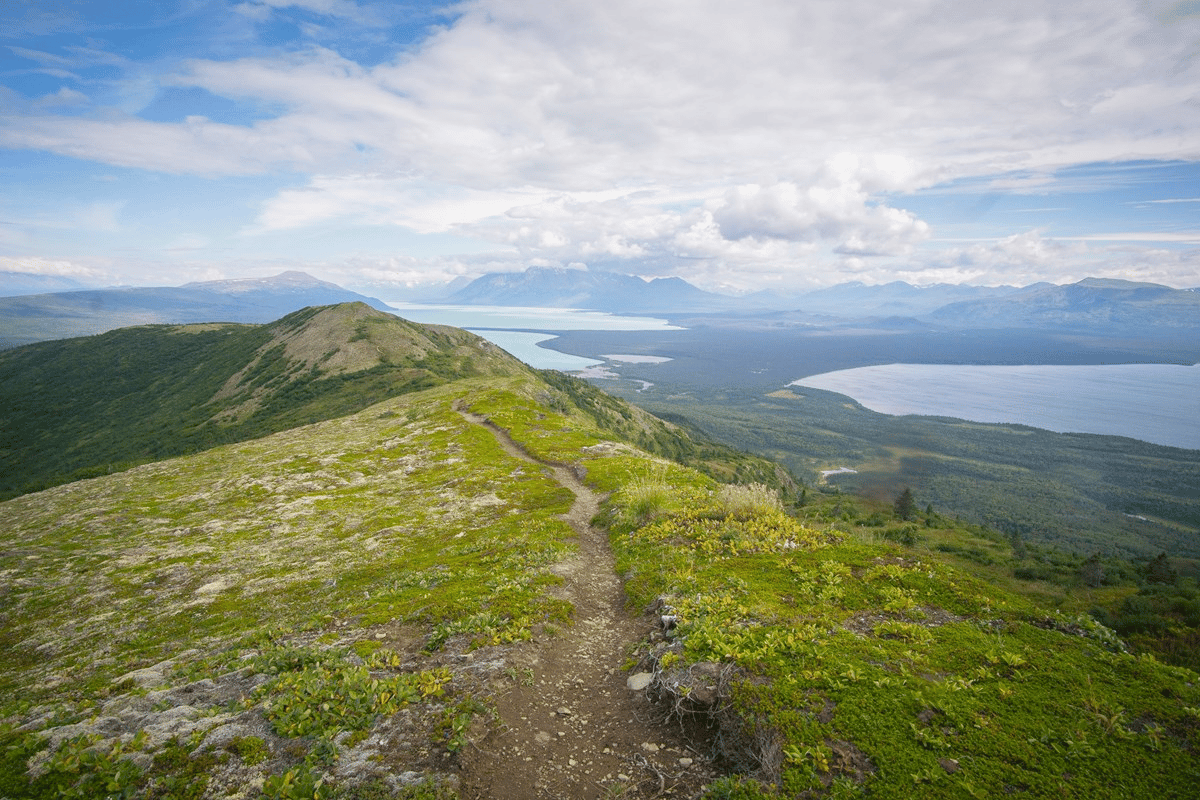
11. Jimmy Carter expanded the Park As Part Of The Largest Single Act Of Conservation In U.S. History
If I had to select which of the Katmai National Park Facts were my favorite, it would be this one.
The park was expanded as a part of the largest single act of conservation in U.S. history.
That act and the man responsible for it is a fitting way to conclude our list of fascinating facts about Katmai National Park.

RELATED: Jimmy Carter Was The GREATEST Conservation President
The Alaska Lands Act
During the presidency of Jimmy Carter, America’s most trusted newsman was legendary CBS News Anchor Walter Cronkite.
After the historic passage of one of Carter’s most important environmental actions, called the Alaska Lands National Interest Conservation Act (ANILCA), Cronkite had this to say:
“President Carter today more than doubled the size of the National Park System by invoking his executive authority to protect 56 millions acres of Alaskan Wilderness. Environmental groups said Carter has now replaced Teddy Roosevelt as the greatest conservation president of all time.”

The Alaska National Interest Lands Conservation Act (ANILCA) designated more than 100 million acres of federal land in Alaska as new or expanded conservation system units.

CHECK OUT: 13 Reasons Why Jimmy Carter Is America’s Greenest President
Pin Katmai National Park Facts
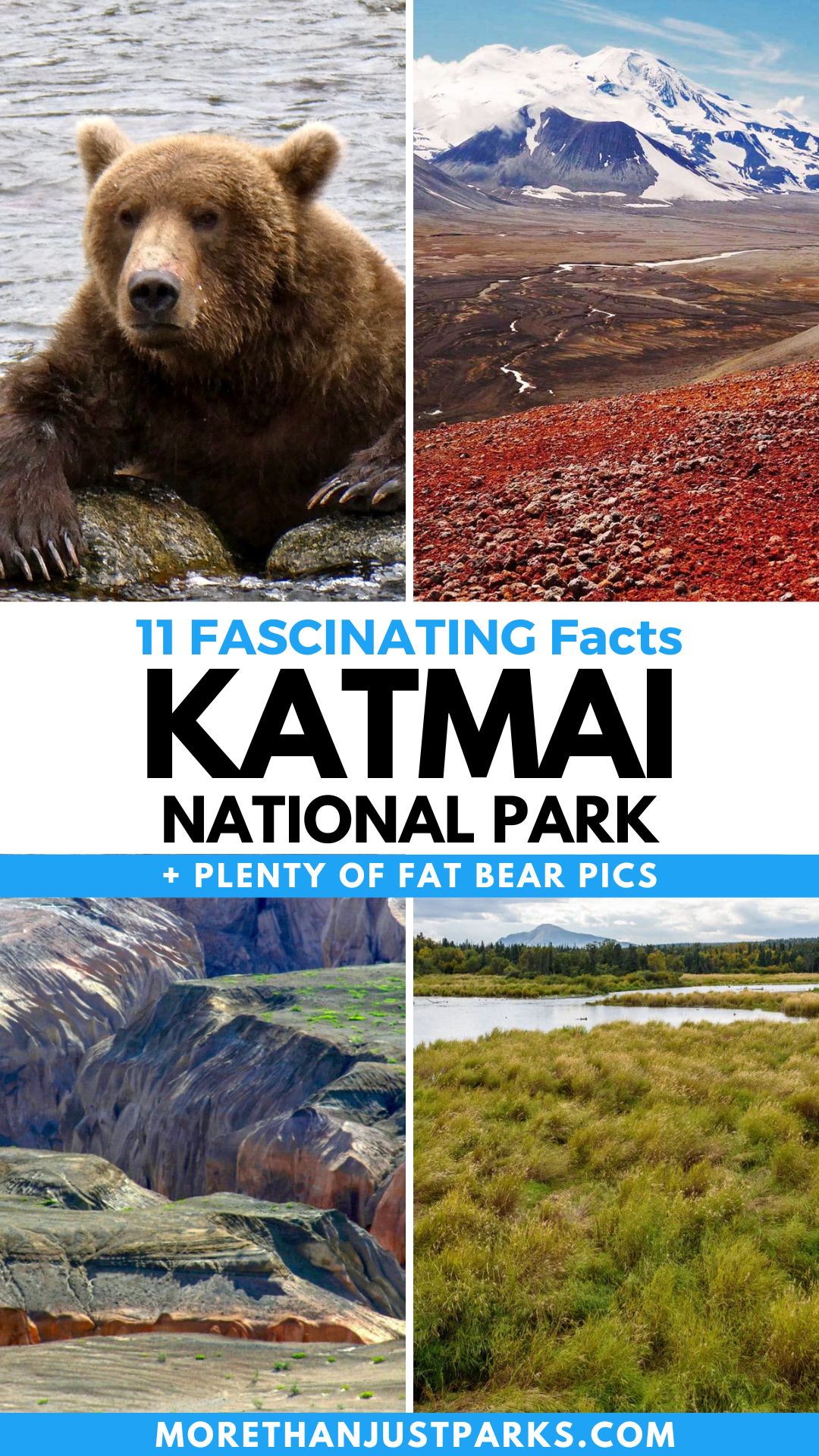
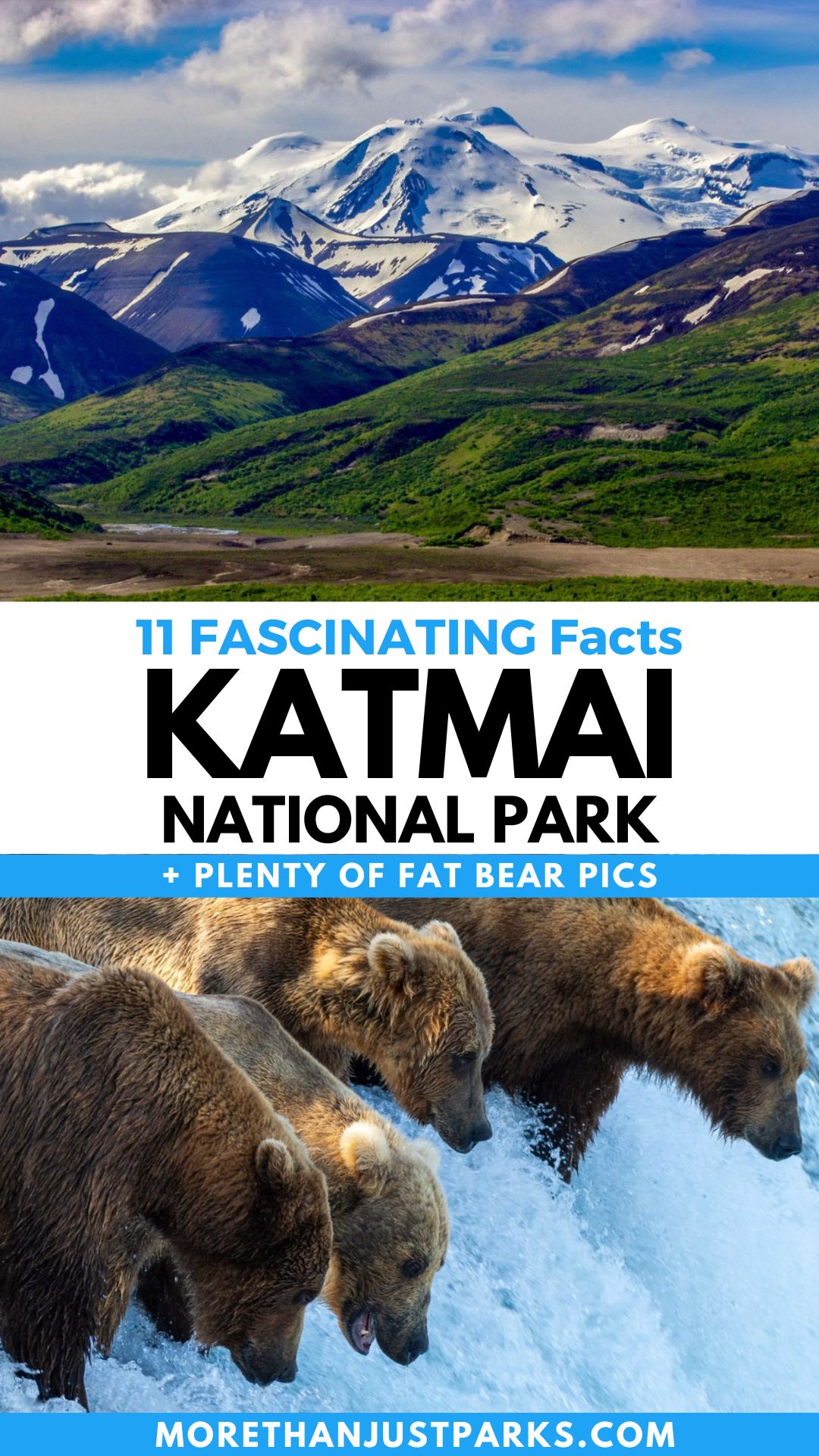
Why Trust Us About Katmai National Park?
We’re Jim Pattiz and Will Pattiz, collectively known as the Pattiz Brothers (and sometimes the Parks Brothers), and we absolutely LOVE the national parks.
You should probably know that we don’t just make this stuff up out of thin air. We’ve spent our entire adult lives exploring and filming America’s national parks and public lands.
We’ve worked with the National Park Service, the Department of Interior, the USDA, and the U.S. Forest Service for years, creating films on important places and issues. Our work has been featured in leading publications all over the world and even some people outside of our immediate family call us experts on the national parks.

Meet The Parks Brothers
Map Of Katmai National Park
List Of Katmai National Park Facts
- The Earliest Inhabitants Established Camps On The Katmai Pacific Coast Almost 6,000 Years Ago
- The First Europeans To Arrive In The Katmai Area Were Russians
- On June 6, 1912, The Largest Volcanic Eruption Of Its Kind Occurred, Creating Katmai Caldera and the Valley Of 10,000 Smokes
- Katmai National Park Became A Center Of Scientific Exploration
- Scientists Have Documented 42 Species Of Mammals
- Katmai Is One Of The Premier Brown Bear Viewing Areas In The World
- Katmai Sits Near The Boundary Of Two Tectonic Plates
- Katmai Is Home To Hundreds Of Different Plant Species
- A Variety Of Salmon and other Fish Inhabit Katmai
- The Park Has Some Amazing Hiking Trails
- Jimmy Carter expanded the Park As Part Of The Largest Single Act Of Conservation In U.S. History
We Hope You’ll Follow Our Journey

Our goal here at More Than Just Parks is to share the beauty of America’s national parks and public lands through stunning short films in an effort to get Americans and the world to see the true value in land conservation.
We hope you’ll follow our journey through the parks and help us to keep them the incredible places that they are. If you’re interested in joining the adventure, sign up below!
Helpful Articles
Alaska National Parks: 8 Amazing Alaska National Parks (Tips for Visiting)
Glacier Bay National Park Facts: 11 Amazing Glacier Bay National Park Facts
Denali National Park Facts: 10 Fascinating Facts About Denali National Park
National Parks Ranked: All 63 Best US National Parks Ranked from Best to Worst
List Of Parks: Official List of US National Parks (Alphabetical & by State)
Map Of National Parks: Printable Maps of the National Parks

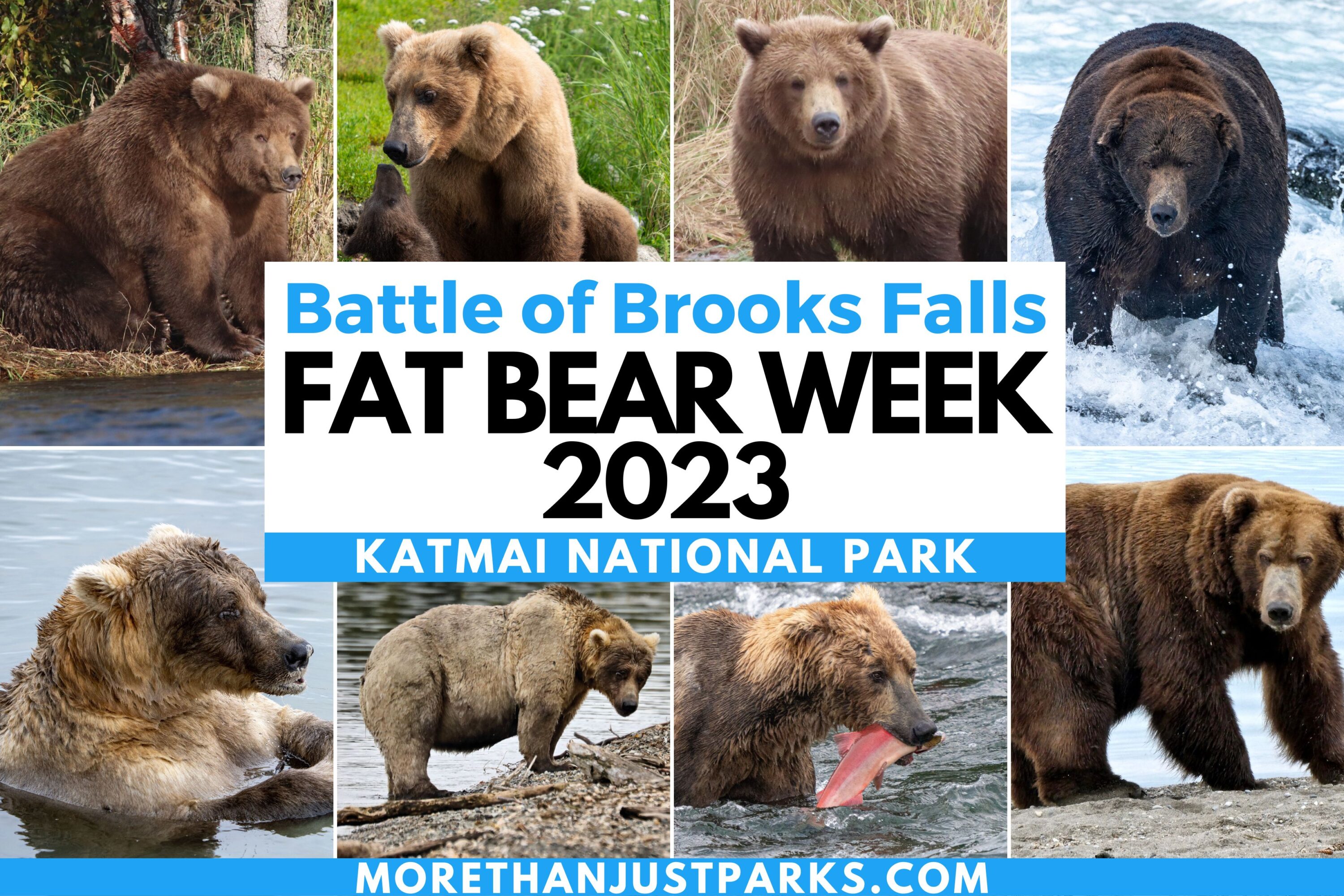
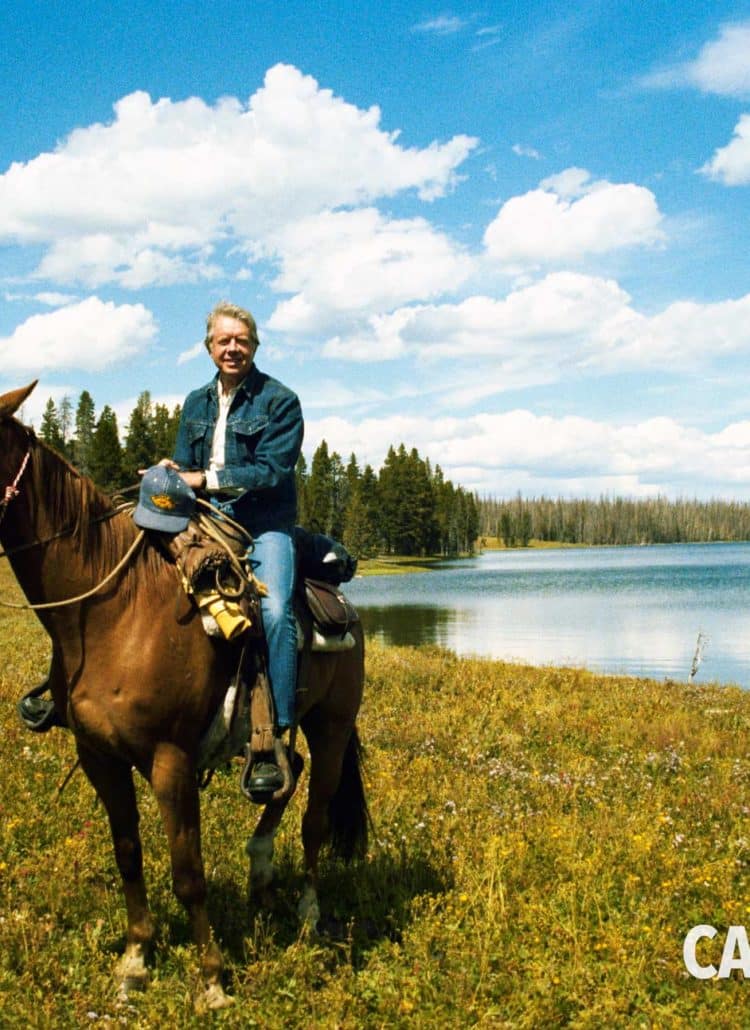
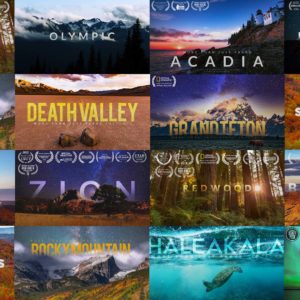

Leave a Reply